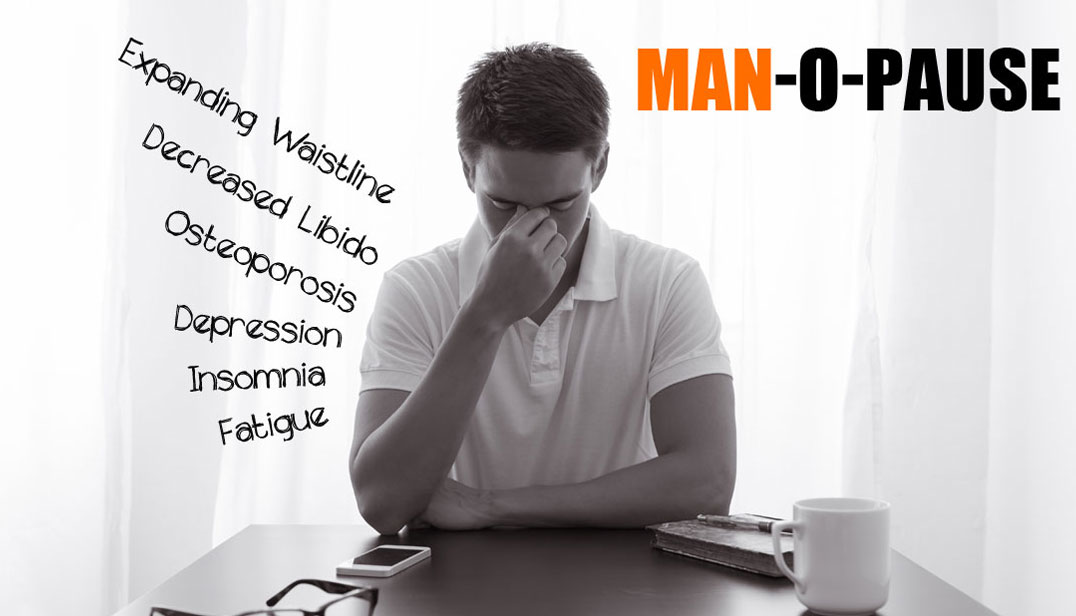
The expression "andropause" is used to describe the condition of men who have a testosterone production drop after middle-age.
Andropause is a topic of dispute among medical establishments. In the case of ladies, menopause is associated with the discontinuation of a biological process - namely, when the month-to-month menstruation stops. Additionally, a vital decrease in the hormonal levels in females takes place in addition to menopause. Because of these factors, physicians are questioning whether male menopause really exists.
In the case of males in their middle and elderly years, smaller quantities of testosterone are being produced via the testes. This is believed to be the underlying reasons behind the occurrence of signs and symptoms of male menopause.
Males with andropause usually experience irritation, sleep disruption, reduced libido, perspiring, stress and anxiety, sadness, memory troubles, as well as impotence.
For the most part, ED could be brought on by other issues - however, testosterone deficiency might be one possibility.
It is necessary that men that struggle with signs and symptoms related to reduced levels of testosterone go through clinical analysis for blood work to assess testosterone production.
Other reasons for having low testosterone production can be a testicular disorder and a potential inherited condition.
As a treatment, hormone replacement therapy is being recommended for guys with reduced amounts of testosterone and also the signs and symptoms that come with it.
HRT might not apply to older men that look for treatment for their impotence unless they actually have extremely minimal amounts of testosterone. When it comes to more youthful men with well-known hormonal shortage, it has been proven that small dosages of testosterone could improve desire in sex.
Testosterone replacement therapy, which is also referred to as HRT, intends to minimize the symptoms caused by male menopause. This technique is a lifelong treatment, considering that testosterone shortage is generally an irreversible problem.
HRT is normally provided as an oral prescription, implants, or shots.
The shot of testosterone is usually done when every 2 weeks.
The sublingual drugs are particularly prescribed to those that cannot tolerate injections or implants.
The testosterone implants, which are being put under the skin of the buttock or abdominal area help a period of months. The implant functions by introducing testosterone directly into the bloodstream.
Androgen therapy, nonetheless, comes with possible negative effects and dangers.
With reduced testosterone production, the prostate has the tendency to get smaller. Hormone replacement therapy can not recuperate a physically shrunken prostate because it doesn't have influence in the degrees of prostate-specific antigen.
Hormone replacement might not be a cause of enhanced risk of prostate cancer for those that have normally higher testosterone output in the very same age bracket.
On the other hand, the security of hormonal replacement and it's potential results on the prostate gland, mental performance, and also cardiovascular system still need to go through appropriate investigation. In addition, there is additionally a should evaluate the possible advantages of androgen treatment on the bones and muscular tissues.
HRT is stated to boost the risk of heart problems, although investigation on this topic is uncertain. It is a known fact, nonetheless, that those with low testosterone levels have been found among cardiac arrest sufferers. This opens up the opportunity that hormone replacement therapy might aid stop cardiovascular diseases.
Older guys undiagnosed for prostate gland cancer must also take care when being applied with androgens.
Sleep apnea, or the cessation of breathing during rest, is additionally considered as an uncommon danger associated with hormone treatment.